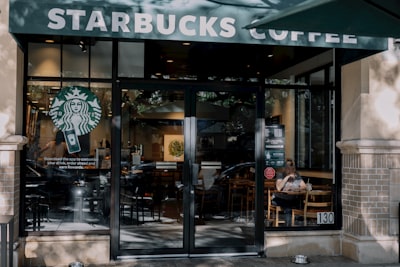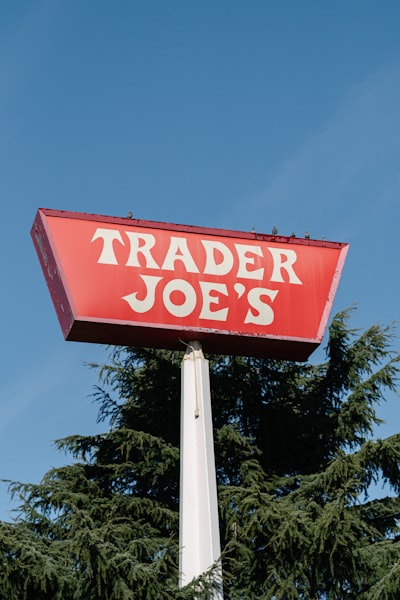Key Highlights
Here’s a quick look at what we'll cover:
- The "Starbucks Effect" describes how the presence of the coffee shop is linked to rising property values.
- Homes near a Starbucks have historically seen their home prices appreciate faster than the national average.
- The arrival of a Starbucks is seen as a confirmation of a neighborhood's existing growth and appeal.
- Recent closures can be a warning sign, potentially impacting both residential and commercial real estate.
- A real estate broker will tell you other brands, like Whole Foods, also boost local amenities and home values.
Introduction
Have you ever wondered if that corner coffee shop does more than just serve lattes? Many people believe that the arrival of a major brand like Starbucks is a sign of good things to come for a neighborhood. This idea, known as the "Starbucks Effect," suggests a direct link between the popular coffee giant and rising property values. For homeowners and potential buyers, this could mean that proximity to your favorite brew might actually impact home prices and your overall investment.
The Starbucks Effect Explained
So, what exactly is the "Starbucks Effect"? In simple terms, it's the phenomenon where the presence of this popular coffee shop is associated with increasing real estate values in a neighborhood. Its arrival is often seen as a seal of approval, signaling that an area is on the rise.
This doesn't mean the coffee shop itself causes prices to soar. Instead, Starbucks has a sophisticated real estate team that chooses locations already showing signs of economic growth and potential. The presence of national brands like Starbucks confirms this trend, attracting more residents and investors, which helps boost property values.
What Makes a Starbucks Location Impact Neighborhood Perception
The choice of Starbucks locations is a data-driven process. The company targets areas where factors like economic growth, rising demand, and increasing property values are already in motion. When Starbucks opens a store, it's essentially confirming that the neighborhood is a good bet.
This confirmation has a powerful effect on how people see the area. The presence of a brand known for its upscale clientele suggests that residents have more disposable income. For many, a Starbucks signals that a neighborhood has "arrived," which can attract other desirable local businesses and residents.
This process is often linked to gentrification, where an influx of wealthier residents and upscale businesses changes a neighborhood's character. The arrival of a Starbucks can be one of the first visible signs of this shift, further enhancing the area's appeal and, in turn, its property values.
How the Presence of Starbucks Influences Property Values
Yes, living near a Starbucks can genuinely influence property values. A big reason is the convenience factor. People want amenities within close distance, and having a well-known coffee shop nearby adds to a neighborhood's desirability and increases foot traffic.
The presence of a Starbucks also acts as a quick indicator of the area's economic health. With a grande latte costing around $6, the ability of a coffee shop to thrive suggests that the local community has higher income levels. This perception attracts more affluent buyers and renters, driving up demand.
Ultimately, Starbucks doesn't just sell coffee; it sells a lifestyle. This aspirational branding contributes to the neighborhood's appeal. When other businesses see a Starbucks succeeding, they are more likely to invest in the area, further boosting the available amenities and making it a more attractive place to live.
Unpacking the Data: Starbucks and Real Estate Value Increases
The Starbucks Effect isn't just a popular theory; it's backed by data. A well-known Zillow report from 2015 put numbers to the phenomenon, analyzing housing prices in proximity to the coffee giant. The findings showed a significant difference in appreciation for homes near a Starbucks compared to a typical U.S. home.
This research quantified just how much of an impact the coffee chain's presence could have on home prices. It showed that while home values rose across the country, they surged at a much higher rate in these specific areas, offering a clear financial benefit to homeowners. We'll explore these numbers in more detail next.
Research Findings on Home Prices Near Starbucks
A study by Zillow provided compelling evidence for the Starbucks Effect. It found that between 1997 and 2014, homes located within a quarter-mile of a Starbucks saw their values increase by 96%. This is a massive jump compared to the average U.S. home, which appreciated by 65% during the same period.
Zillow's CEO, Spencer Rascoff, weighed in on these findings, highlighting the clear disparity in home price growth. He noted that the appreciation near Starbucks locations outpaced not only the national average but also that of its competitor, Dunkin' Donuts, which saw an 80% increase. The data paints a clear picture of the financial advantage.
The table below breaks down the appreciation rates:
Location: Homes near Starbucks
Appreciation (1997–2014): 96%
Location: Homes near Dunkin' Donuts
Appreciation (1997–2014): 80%
Location: Average U.S. Home
Appreciation (1997–2014): 65%
Are Office Rents Affected Differently Than Residential Properties?
The Starbucks Effect isn't limited to just homes; it also extends to commercial real estate. Having a local Starbucks nearby is a significant perk for office workers, adding to the convenience and appeal of a commercial building or business district. This can make office spaces in the area more attractive to potential tenants.
While residential values are often driven by lifestyle and community perception, office rents are heavily influenced by amenities that serve the workforce. A popular coffee shop can increase foot traffic and provide a convenient meeting spot, making a commercial property more desirable.
This increased desirability can allow landlords to command higher office rents. As companies compete for prime locations that offer the best amenities for their employees, the presence of a brand like Starbucks can give a property a competitive edge, potentially leading to better financial performance than properties without such conveniences.
Recent Trends: Store Openings, Closures, and Shifting Markets
Lately, the conversation has shifted from a new Starbucks opening to the impact of Starbucks closures. The company has shuttered hundreds of locations, particularly in dense urban areas where foot traffic in central business districts has remained low. These closures are raising questions about the economic health of these shifting markets.
For landlords and homeowners, this trend is a cause for concern. Just as a new location can signal growth, a closure can suggest the opposite. The "Starbucks Exit Effect" is now a real consideration, forcing investors to re-evaluate what these changes mean for nearby property values.
The Impact of New Starbucks Stores in 2024

Even with some closures, the Starbucks Effect is still relevant for homebuyers and investors in 2024. The opening of a new Starbucks remains a powerful signal. It tells you that a data-driven corporation has identified the neighborhood as a place with strong future potential, including expected foot traffic and a solid customer base.
For potential homebuyers, the arrival of a new store still communicates convenience and access to everyday amenities. While it may not be the indicator of an "exclusive" neighborhood it once was, it still adds to an area's overall desirability and confirms that it meets a certain standard of commercial viability.
In a shifting market, these signals can be more important than ever. A new Starbucks opening in 2024 might stand out as a beacon of stability and growth, making the surrounding area particularly attractive to those looking to buy or invest.
What Happens to Nearby Real Estate When Starbucks Closes
When a Starbucks closes, it can serve as a major red flag for the local market. One financial expert described it as "the ultimate canary in the coal mine." This is because Starbucks' decision to leave isn't a guess; it's a data-driven declaration that a neighborhood's economic fundamentals, like foot traffic and disposable income, are in decline.
For a potential homebuyer, this should be a "five-alarm fire." A closure is a reliable indicator that the commercial viability of the area is weakening, and a drop in property values is likely to follow. This isn't just about coffee; it's a forecast that the "party is over" for that neighborhood's growth.
The exit of a major brand can create a ripple effect. It might cause other local businesses to reconsider their investments, and it can subtly shift how buyers and renters perceive the neighborhood. If one or more closures lead to a downward spiral, it will almost certainly hurt surrounding home prices.
Beyond Starbucks: Other Businesses that Influence Property Values
Starbucks isn't the only brand that can give a neighborhood a boost. Other national brands, particularly upscale grocery stores, have a similar effect on property values. The presence of a retailer like Whole Foods, for example, is often seen as a sign that a neighborhood has "arrived" and is a desirable place to live.
These businesses add to a community's list of amenities, signaling convenience and affluence. Their arrival attracts more upscale development and residents, which in turn drives up demand and home values. Next, we'll look at which other brands have this powerful influence.
Which Retail Brands Have a Similar Effect on Real Estate?

Several other retail brands are known to have a positive impact on real estate. Like Starbucks, these national brands are associated with convenience, quality, and a certain type of community, making them powerful indicators for homebuyers and investors.
Upscale grocery stores are at the top of the list. A 2022 survey found that homes near specific grocers saw significant equity gains. For example, properties near Trader Joe's and Whole Foods are highly desirable. Even another coffee chain, Dunkin' Donuts, has a notable effect, though slightly less than Starbucks.
Here are a few brands that can boost home values:
- Trader Joe's: Homes nearby saw a 49% increase in value over five years.
- Whole Foods: The presence of this grocer corresponded with a 45% increase.
- ALDI: This store had a surprisingly large impact, with a 58% increase over five years.
What First-Time Home Buyers Should Consider About Local Amenities
If you're a first-time buyer, it's wise to look at the bigger picture. As one real estate broker explained, people consider a neighborhood's "total package." The presence of one coffee shop is a good sign, but it's the combination of local amenities that truly adds to desirability and impacts home prices.
Don't just rely on one brand. Instead, consider the overall health of the commercial area. Are storefronts filled with a mix of desirable local and national brands? A vibrant retail scene signals a stable and thriving community, which is a much safer bet than a neighborhood that depends on a single big-name store.
Here's what homebuyers should keep in mind:
- Look for a variety of convenient amenities, not just one.
- A mix of national and strong local brands can indicate a healthy, unique community.
- Pay attention to closures. A vacant storefront, especially a former Starbucks, can be a warning sign.
Conclusion
In summary, the Starbucks Effect underscores how the presence of a beloved coffee brand can significantly enhance property values and shift neighborhood dynamics. As we've explored, not only do Starbucks locations elevate neighborhood perception, but they also create ripple effects that influence both residential and commercial real estate markets. Understanding these trends is crucial for potential homeowners and real estate investors alike, as they navigate the complex landscape of property values. With a keen eye on local amenities and emerging market shifts, you can make informed decisions that reflect both lifestyle preferences and investment potential. For more insights or personalized advice, feel free to reach out!

.png)



